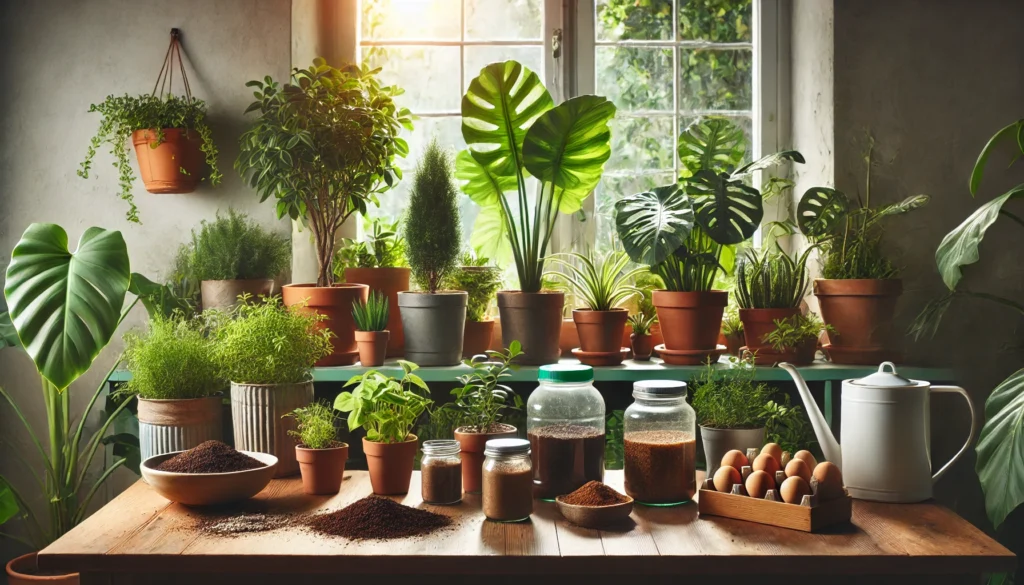
How to Fertilize Indoor Plants Naturally: Best Organic Methods for Healthy Growth
If you’re looking for a way to nurture your indoor plants without relying on harsh chemicals, you’ve come to the right place! How to fertilize indoor plants naturally is a question many plant lovers have, and for good reason. Organic methods not only boost plant health but also improve the quality of the soil, making your green companions thrive in a more sustainable way. In this article, we’ll explore the best organic fertilizers, how to apply them effectively, and the benefits of choosing natural options for your indoor garden. Let’s dive into healthier, greener plant care!
Table of Contents
ToggleUnderstanding the Basics of Fertilization 🌱
Fertilization is the process of providing plants with the nutrients they need to grow strong and healthy. Plants absorb these nutrients from the soil, but over time, the soil can become depleted, making it harder for your plants to thrive. That’s where fertilization comes in!
Why Do Plants Need Fertilizer? 🤔
Plants rely on three primary nutrients:
- Nitrogen (N): Essential for lush, green leaves 🌿.
- Phosphorus (P): Supports strong root development and flowering 🌸.
- Potassium (K): Helps plants resist diseases and improves overall vitality 💪.

In addition to these, plants also need micronutrients like calcium, magnesium, and iron for optimal growth. When the soil lacks these essential nutrients, your plants may show signs of stress, such as yellowing leaves or stunted growth.
How Organic Fertilizers Help 🌻
Unlike synthetic fertilizers, organic options, like compost or worm castings, release nutrients slowly. This not only provides plants with a steady supply of food but also improves soil health over time. Healthy soil means stronger roots, better drainage, and happier plants! 🌿💚
By understanding these basics, you’ll be better equipped to nurture your indoor plants naturally, helping them flourish with vibrant growth!
Benefits of Using Organic Fertilizers 🌿
Using organic fertilizers offers several advantages that can help your indoor plants thrive while being kind to the environment. Here’s why choosing organic is the way to go:
Eco-Friendly and Sustainable 🌍
Organic fertilizers are made from natural materials like compost, worm castings, and seaweed. These fertilizers are biodegradable and contribute to a healthier planet by reducing pollution and minimizing chemical runoff into our water systems. Choosing organic means you’re supporting sustainable practices that benefit the earth!
Safe for Pets and Children 🐾👶
Many synthetic fertilizers contain harmful chemicals that can be toxic to pets and small children if ingested. Organic options, on the other hand, are much safer to use around your loved ones. With natural fertilizers, you won’t have to worry about harmful effects, making them perfect for homes with curious pets or kids.
Improved Soil Health 🌱
Organic fertilizers enrich the soil with beneficial microbes and organic matter. This helps improve soil structure, water retention, and aeration, creating a better environment for plant roots to grow. Healthier soil leads to healthier plants, ensuring they have everything they need to flourish.
Long-Term Plant Health 🌸
Organic fertilizers release nutrients slowly, providing a steady food source for your plants over time. This gradual release helps prevent nutrient burn and encourages balanced growth, resulting in stronger, more resilient plants that can better resist pests and diseases.
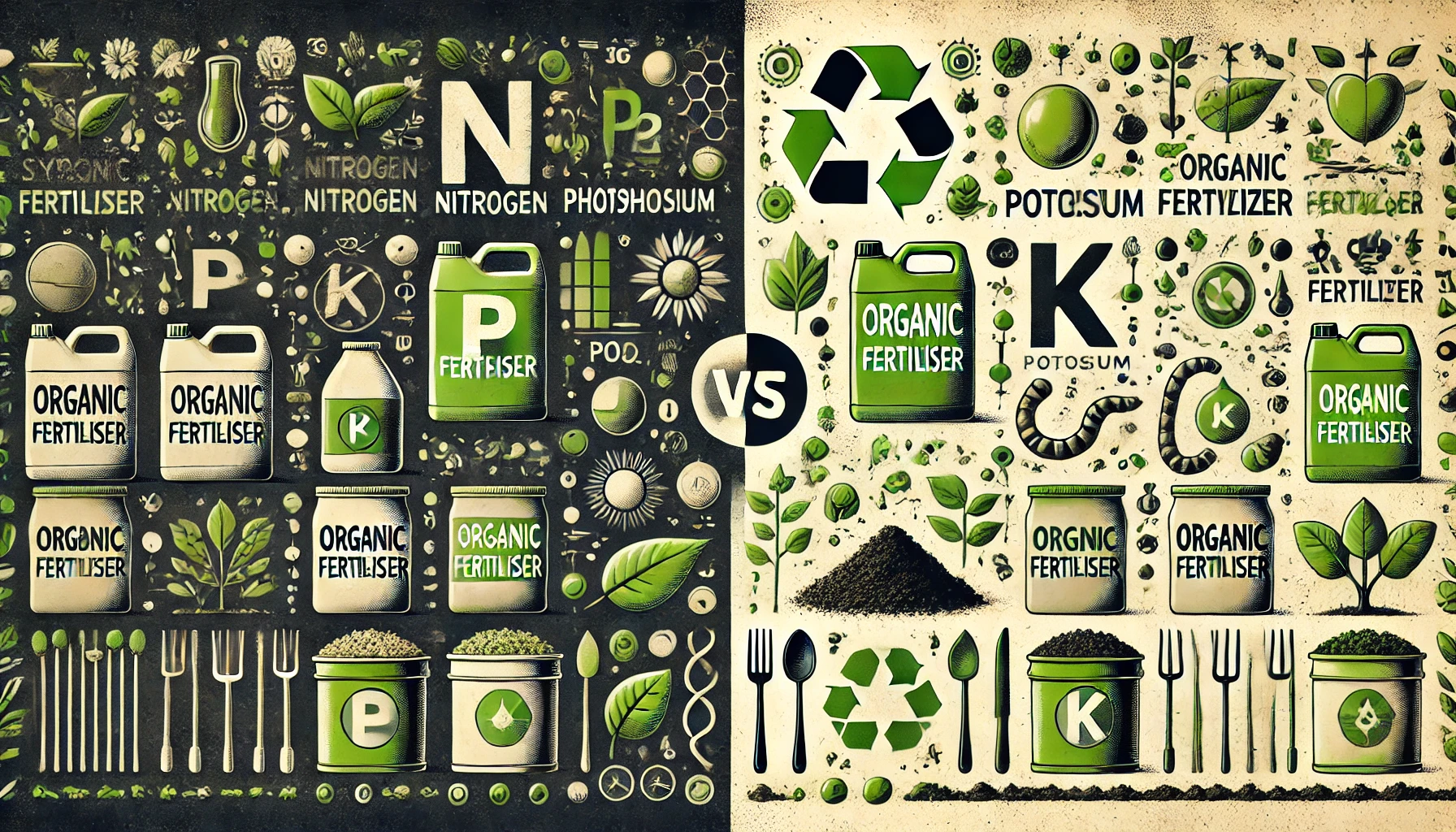
By using organic fertilizers, you’re not only helping your indoor plants grow better but also contributing to a more sustainable, healthy world! 🌎💚
Best Organic Fertilizer Options for Indoor Plants 🌿
When it comes to fertilizing your indoor plants naturally, there are several organic options that provide essential nutrients for healthy growth. Here are the top organic fertilizers to consider:
Compost 🌱
Compost is one of the best natural fertilizers for indoor plants. Made from decomposed organic matter like fruit peels, vegetable scraps, and yard waste, it’s rich in nutrients. It improves soil structure, boosts microbial activity, and provides a slow, steady release of nutrients. Simply add a layer of compost to the top of the soil or mix it in for the best results.
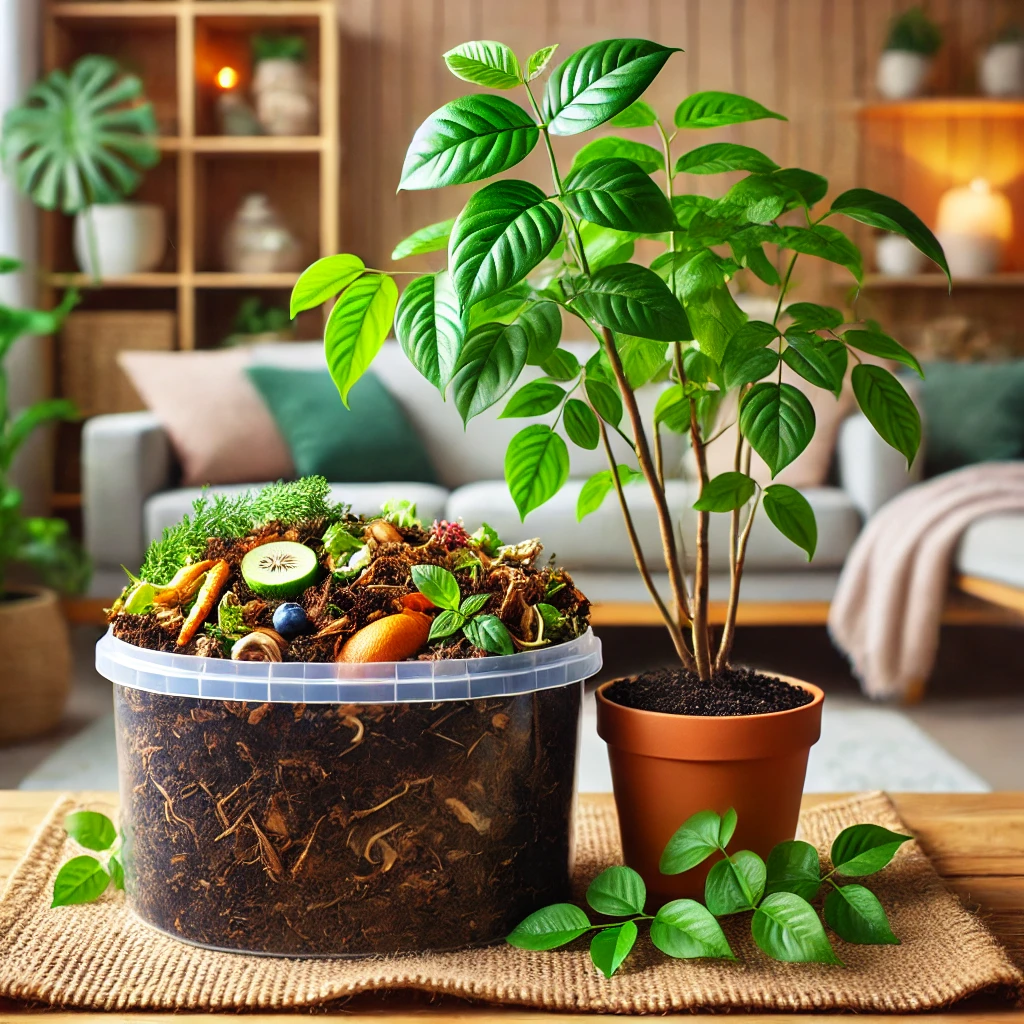
Worm Castings 🪱
Worm castings are packed with nutrients and beneficial microbes, making them an excellent organic fertilizer. They help improve soil texture, retain moisture, and promote strong root growth. Worm castings are also gentle on plants, so you can use them regularly without worrying about over-fertilizing.
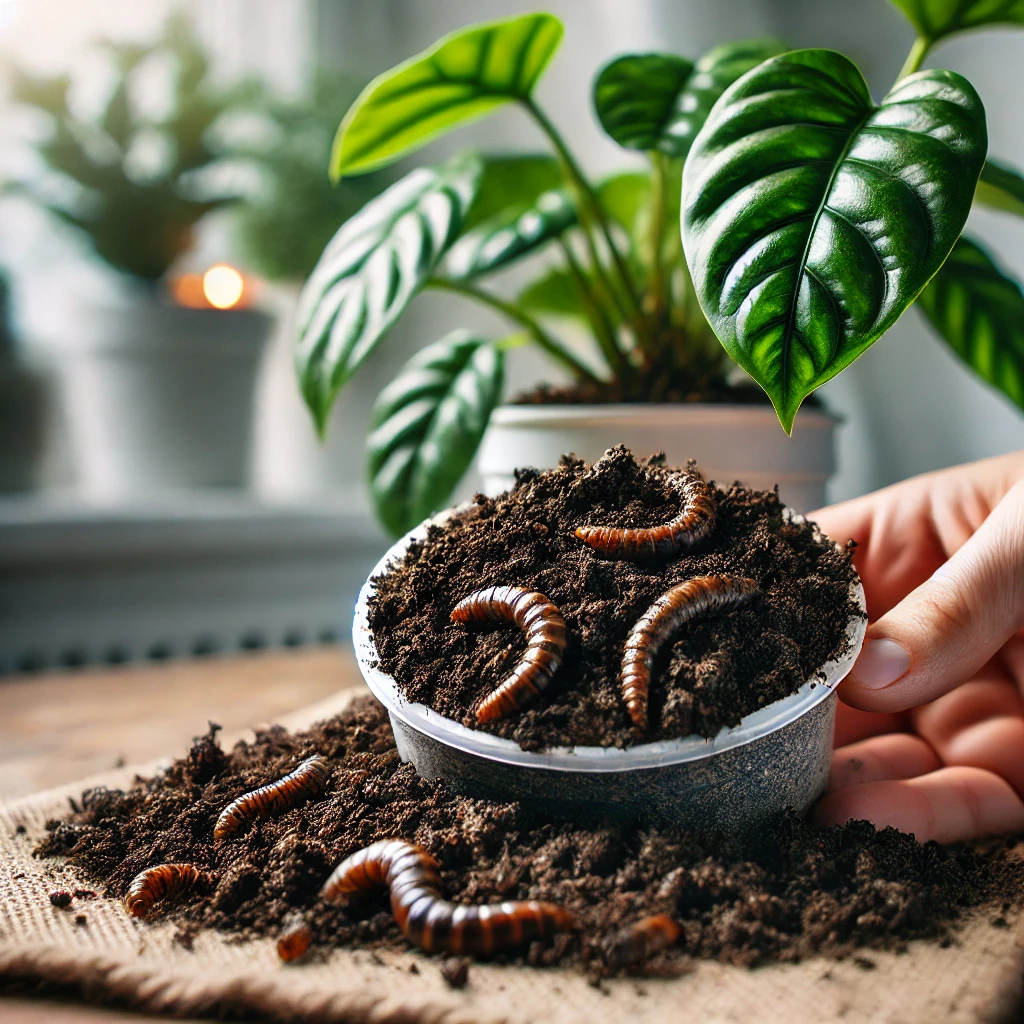
Fish Emulsion 🐟
Fish emulsion is a liquid fertilizer made from fish byproducts, and it’s rich in nitrogen, phosphorus, and potassium. It’s a fast-acting fertilizer, perfect for giving your plants a quick nutrient boost. Just dilute it with water and apply it every few weeks to encourage healthy growth and vibrant foliage.
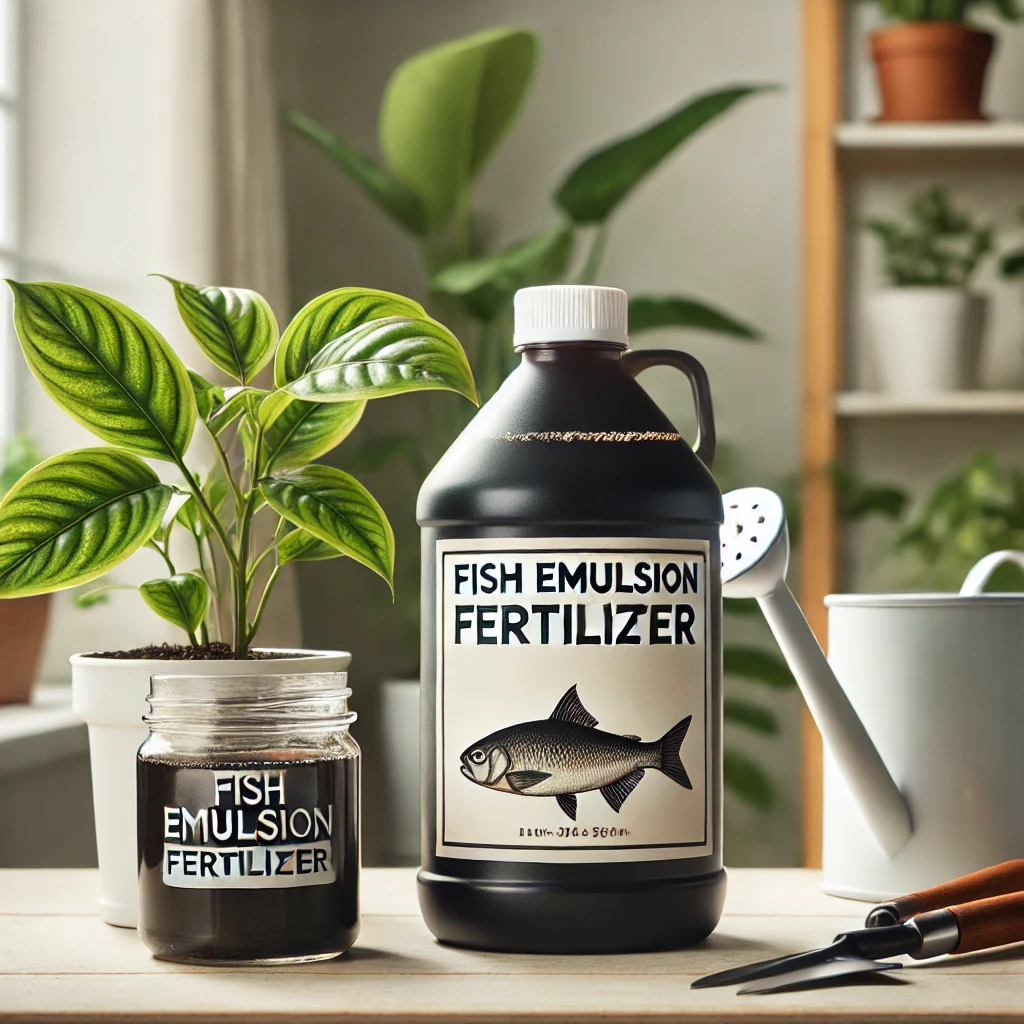
Seaweed or Kelp Extract 🌊
Seaweed or kelp extract is packed with trace minerals, growth hormones, and vitamins that help promote healthy plant growth. It’s especially beneficial for improving root development and boosting resistance to stress. Use it as a foliar spray or mix it into the soil for an extra nutrient boost.
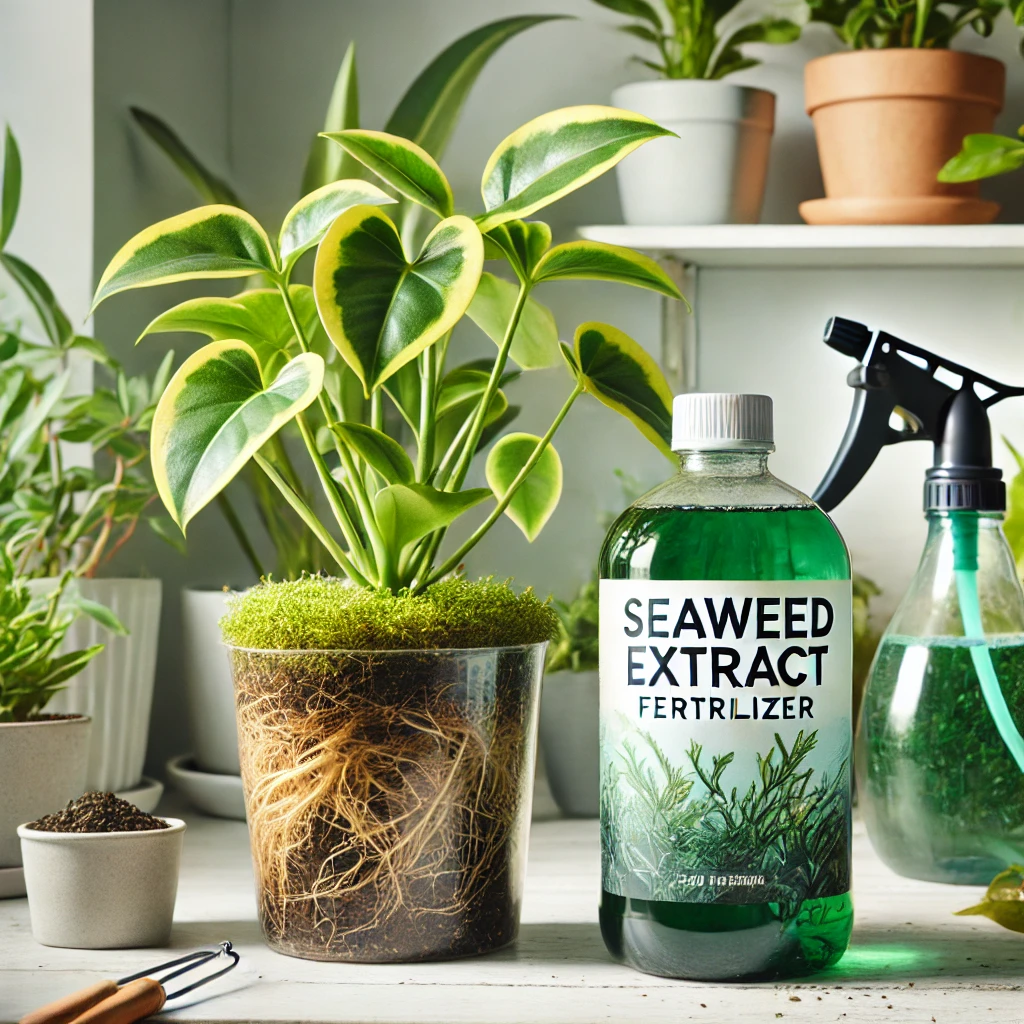
Coffee Grounds and Eggshells ☕🥚
Don’t throw away those used coffee grounds and eggshells! Coffee grounds provide nitrogen, which promotes lush, green foliage, while crushed eggshells are a great source of calcium, which helps with cell wall strength and overall plant health. Simply sprinkle them on the soil or mix them in for an easy, natural fertilizer.
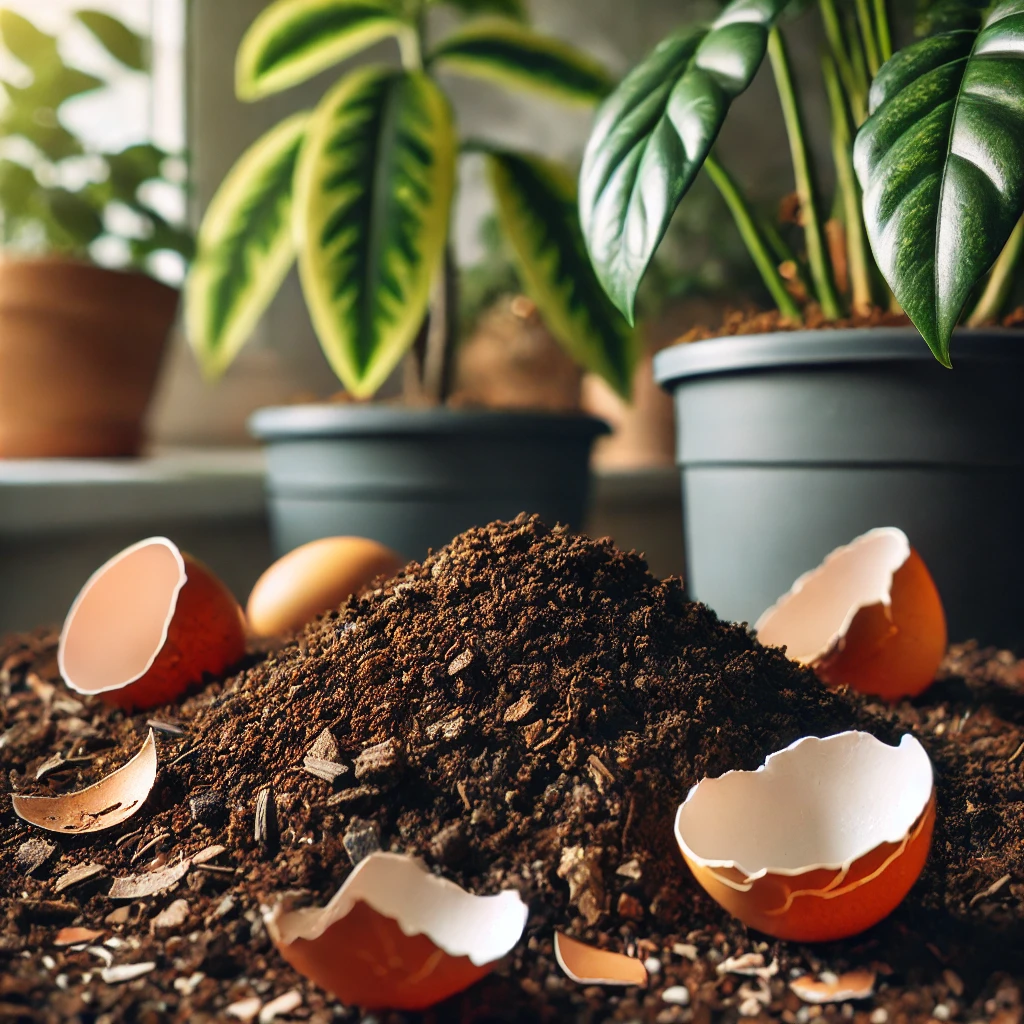
Banana Peel Fertilizer 🍌
Banana peels are packed with potassium, phosphorus, and calcium, making them a great addition to your plant care routine. You can chop up the peels and bury them in the soil or soak them in water to make a nutrient-rich “banana peel tea” for your plants.
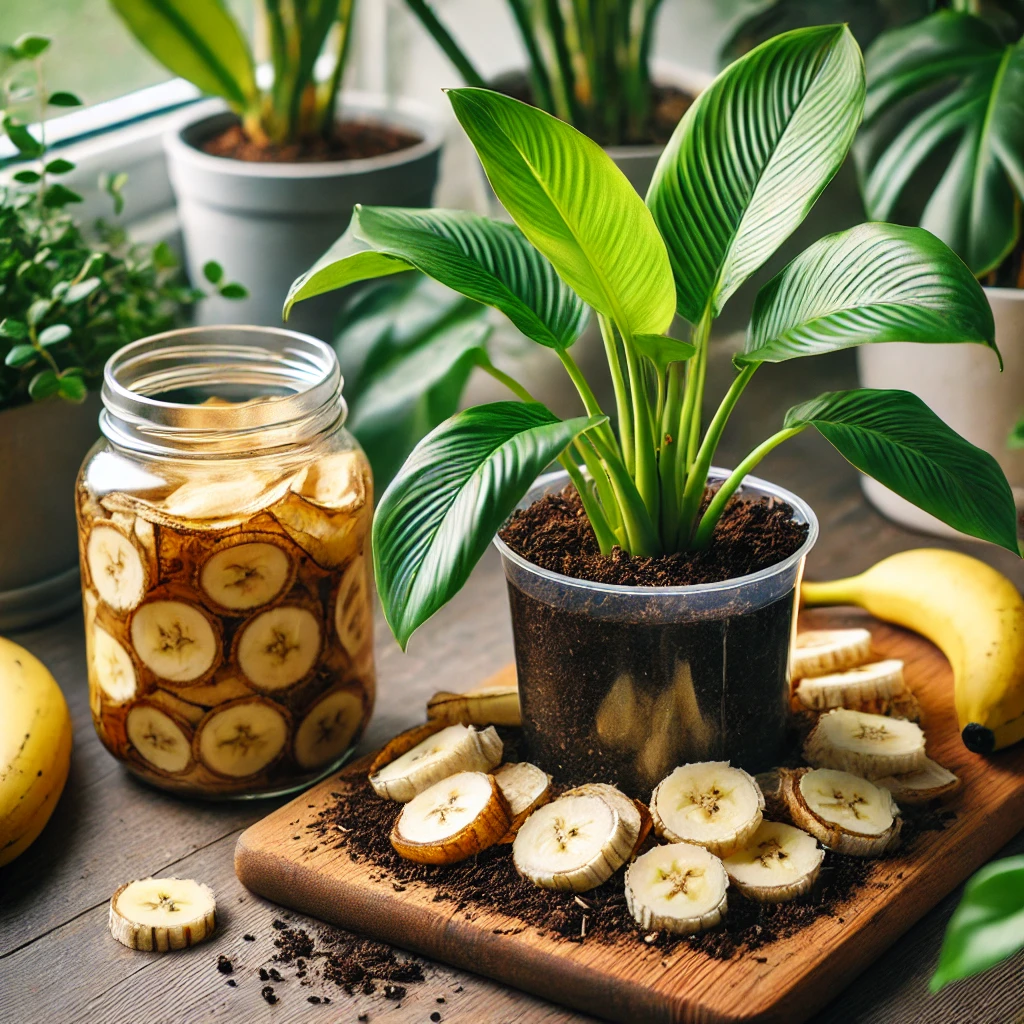
Each of these organic fertilizers offers unique benefits, and the best choice depends on your plant’s specific needs. Experiment with a combination to see which works best for your indoor garden! 🌸
How to Apply Organic Fertilizers to Indoor Plants 🌿
Applying organic fertilizers correctly ensures your plants get the nutrients they need without overwhelming them. Here’s how to do it effectively:
When to Fertilize ⏰
- Growing Season: The best time to fertilize indoor plants is during their active growing period (spring and summer). This is when they need the most nutrients.
- Dormancy: Avoid fertilizing during the winter when plants are in dormancy, as they require fewer nutrients at this time.
- Signs of Stress: If your plant shows signs of yellowing leaves or stunted growth, it might be a sign it needs a nutrient boost.
Application Methods
- Top Dressing 🌱: For solid organic fertilizers like compost or worm castings, apply a thin layer on top of the soil. Gently mix it into the top inch of soil to help nutrients absorb into the root zone.
- Liquid Fertilizers 💧: Liquid organic fertilizers like fish emulsion or seaweed extract are diluted with water. Follow the instructions on the packaging for the right ratio. Water your plants with the mixture every 2–4 weeks for a steady nutrient supply. Avoid applying directly to the plant’s leaves, as this can burn them.
- Compost Tea 🍵: Compost tea is a liquid made by steeping compost in water. It’s full of beneficial microbes and nutrients. Use it as a soil drench, watering your plants with it once a month to improve soil health and plant growth.
Frequency of Fertilizing 📅
- Regular Feeding: Generally, fertilize every 2-4 weeks during the growing season, but always check your plant’s specific needs.
- Slow-Release Fertilizers: Organic fertilizers like compost or worm castings work slowly, so you can apply them less often (about once every 2–3 months).
- Adjust for Plant Type: Some plants, like succulents, don’t need as much fertilizer as tropical plants. Always research your plant’s specific nutrient needs.
Avoid Over-Fertilizing ⚠️
While organic fertilizers are gentler than synthetic ones, overfeeding can still harm your plants. Signs of over-fertilization include browning leaf tips, yellowing leaves, and weak, leggy growth. If you notice these symptoms, reduce the amount or frequency of fertilization.
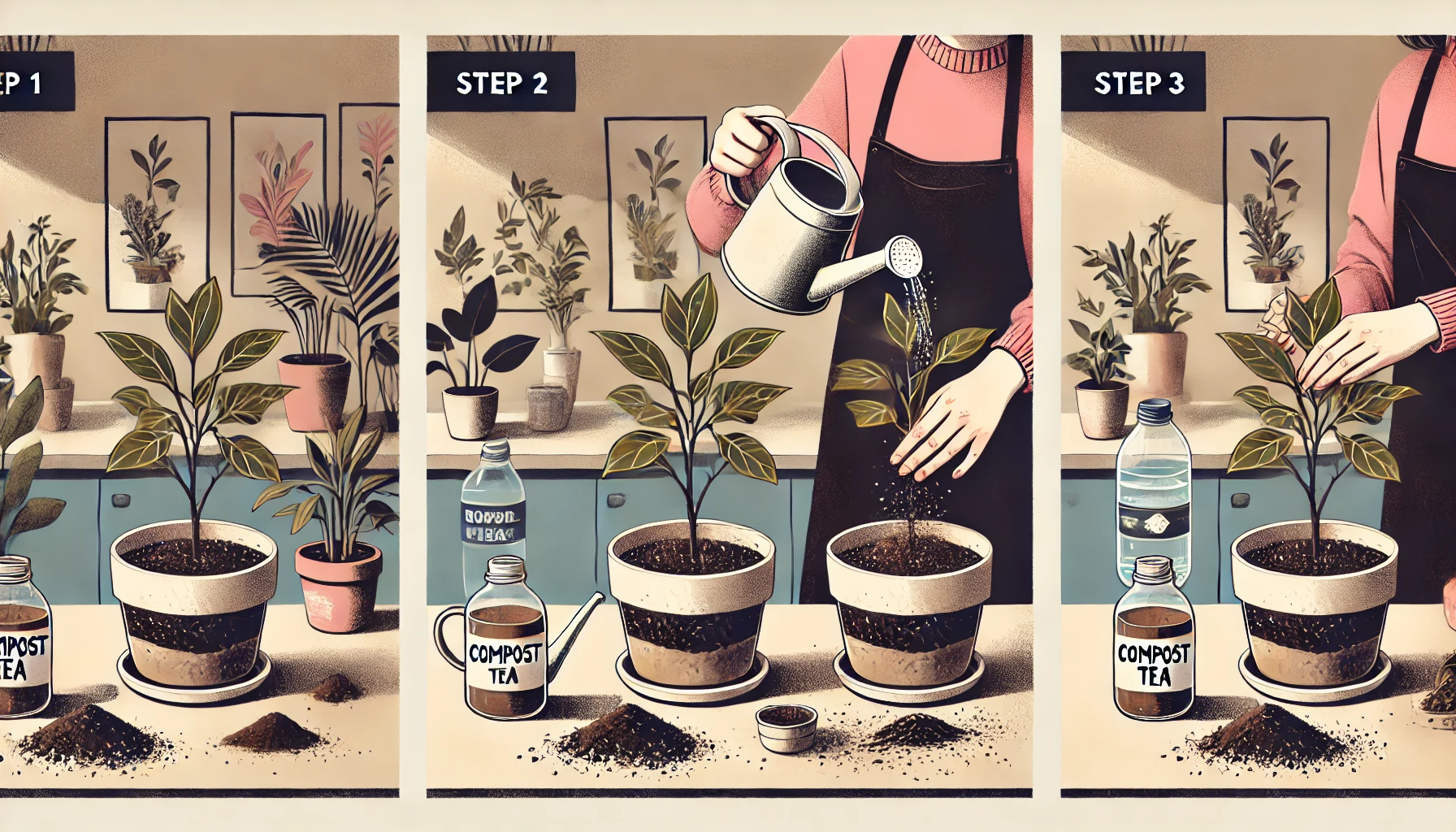
By applying organic fertilizers correctly, you can ensure your indoor plants get the nutrients they need to thrive without overdoing it. Happy growing! 🌿💚
Signs Your Plants Need Fertilization 🌱
Sometimes, it can be tricky to know when your indoor plants need a nutrient boost. Here are some common signs that your plants might be craving a little extra fertilizer:
- Yellowing Leaves 💛
Yellowing leaves, especially older ones, often indicate a nitrogen deficiency. Nitrogen is vital for healthy, green growth. If you notice leaves turning yellow, it may be time to add a nitrogen-rich organic fertilizer like compost or fish emulsion.
- Stunted or Slow Growth 🐢
If your plant has slowed down in growth or seems “stuck,” it could be due to a lack of essential nutrients. Plants that aren’t receiving enough phosphorus or potassium may struggle to develop strong roots or vibrant blooms. Try adding a balanced organic fertilizer to give them a boost!
- Pale or Weak Leaves 🌿
Pale, weak, or small leaves could indicate a deficiency in several nutrients, including nitrogen, iron, or magnesium. If your plant isn’t looking as vibrant as it should, consider applying a liquid organic fertilizer or a slow-release option like worm castings.
- No Flowers or Fruit 🌸🍓
If your flowering or fruiting plant isn’t producing blooms or fruits, it may be lacking phosphorus, which is essential for flowering. Adding an organic fertilizer rich in phosphorus, like bone meal or compost, can help encourage those beautiful blooms or tasty fruits.
- Dry, Crumbly Soil 🏜️
If your indoor plant’s soil is dry and crumbly, it might not be retaining enough nutrients. Organic fertilizers improve soil structure, making it more able to retain moisture and nutrients. If the soil is looking poor, consider replenishing it with organic matter like compost.
- Brown Leaf Tips or Edges 🍂
Brown tips or edges on leaves can signal over-fertilizing or nutrient imbalances, but they can also be a sign of potassium or calcium deficiencies. If you notice this, try cutting back on fertilization frequency and switching to a balanced organic fertilizer.

If you spot any of these signs, it’s time to act! Adjust your fertilizing schedule or experiment with different organic fertilizers to keep your plants healthy and vibrant. 🌱💚
Common Mistakes to Avoid When Fertilizing 🚫
Fertilizing your indoor plants naturally can be a great way to boost their growth, but it’s easy to make mistakes along the way. Here are some common pitfalls to avoid to keep your plants happy and healthy:
- Over-Fertilizing 🌿⚠️
One of the most common mistakes is adding too much fertilizer. While it’s tempting to give your plants a “boost,” over-fertilizing can burn their roots and damage the plant. Stick to the recommended amount on the fertilizer label and avoid fertilizing too often. Remember, more isn’t always better!
- Using the Wrong Type of Fertilizer ❌
Not all plants have the same nutritional needs. For example, succulents and cacti need very little fertilizer, while tropical plants require more frequent feeding. Research your plant’s specific needs before choosing a fertilizer. Using the wrong type can lead to poor growth or nutrient imbalances.
- Fertilizing During Dormancy 💤
Plants naturally go into a resting phase in the winter, during which they require fewer nutrients. Fertilizing during this period can stress your plant and cause growth issues. Save fertilization for the active growing season (spring and summer) when your plant needs it the most.
- Neglecting Soil Health 🌱
While fertilizing is important, don’t forget about the soil. Healthy soil is essential for plant growth. Organic fertilizers work best when paired with good soil. Regularly amend the soil with compost or other organic matter to ensure it’s nutrient-rich and well-draining.
- Applying Fertilizer to Dry Soil 💧
Never apply fertilizer to dry soil, as it can cause the roots to burn. Always water your plant first before applying fertilizer. This helps distribute the nutrients evenly and ensures they’re absorbed properly by the roots.
- Ignoring Plant Symptoms 🚨
Plants often give signs when something’s wrong, such as yellowing leaves, slow growth, or leaf drop. Don’t just assume your plant needs fertilizer right away. First, check the environment (light, temperature, humidity) and consider other factors that could be affecting your plant’s health.

By avoiding these common fertilizing mistakes, you can keep your indoor plants strong, healthy, and thriving without any setbacks. 🌿💚
Maintaining a Balanced Fertilization Routine 📅🌱
A balanced fertilization routine is key to keeping your indoor plants healthy and thriving. Too little or too much fertilizer can lead to poor plant growth, so it’s essential to find the right balance. Here’s how to keep your fertilization routine on track:
- Know Your Plant’s Needs 🌿
Different plants have different nutrient requirements. Some need more frequent fertilization, while others do just fine with less. Research your plant types to understand their specific needs. For example, leafy plants may require more nitrogen, while flowering plants need more phosphorus for blooms.
- Fertilize During the Growing Season 🌞
The best time to fertilize is during your plant’s active growing season—typically in spring and summer. During this time, plants need more nutrients to support new growth and development. Reduce fertilization in fall and winter when the plant is in a resting phase.
- Follow Recommended Dosages 📏
Always follow the instructions on your fertilizer packaging, especially with liquid fertilizers. Over-fertilizing can lead to nutrient burn, while under-fertilizing can stunt growth. For solid fertilizers like compost or worm castings, apply them every 2-3 months or as needed.
- Rotate Between Different Fertilizers 🔄
To maintain a balanced nutrient profile in the soil, consider rotating between different types of organic fertilizers. You can use compost for slow-release nutrients, fish emulsion for a quick boost of nitrogen, and seaweed extract for trace minerals. This helps provide your plants with a wide range of essential nutrients.
- Monitor Your Plants Regularly 👀
Observe your plants regularly for any signs of nutrient deficiencies (like yellowing leaves) or over-fertilization (like brown tips). Adjust your fertilization schedule based on how your plants are responding. Regular monitoring will help you fine-tune the process for each plant.
- Consider Seasonal Adjustments 🌦️
Plants may need more or less fertilizer depending on the season and environmental factors. For instance, during a particularly hot summer, you may need to fertilize less frequently due to faster growth, while in cooler months, plants may need fewer nutrients.
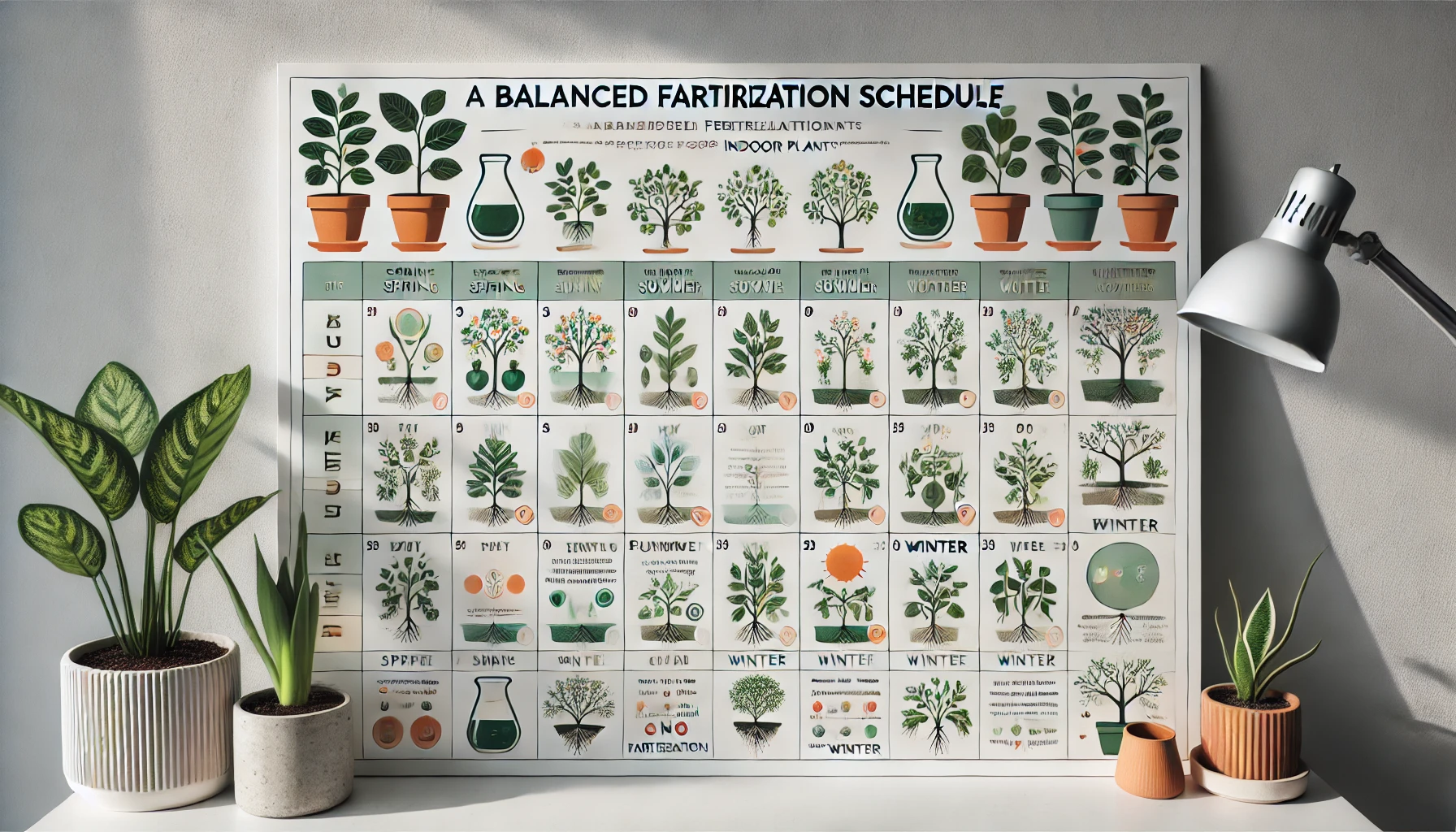
By keeping a consistent, balanced fertilization routine tailored to your plants’ needs, you’ll encourage long-term health, vibrant growth, and beautiful blooms. 🌸🌿
Final Thought
Fertilizing your indoor plants naturally is one of the best ways to ensure they stay healthy and vibrant. By understanding the basics of fertilization, choosing the right organic fertilizers, and applying them correctly, you can provide your plants with the nutrients they need to thrive. Whether you’re using compost, worm castings, or fish emulsion, the key is to maintain a balanced approach and pay attention to your plants’ needs.
Remember, healthy soil, a steady fertilization routine, and avoiding common mistakes will help your indoor garden flourish. With these simple steps, you’ll be on your way to cultivating a thriving, green space right in your home. Happy gardening! 🌱💚
Frequently Asked Questions (FAQ)
What are the best natural fertilizers for indoor plants?
Compost tea, banana peels, eggshells, coffee grounds, and diluted fish emulsion provide essential nutrients.
How often should I fertilize indoor plants with organic methods?
Most houseplants benefit from natural fertilizers every 2-4 weeks during the growing season and less in winter.
Can I use kitchen scraps as fertilizer for indoor plants?
Yes, banana peels, eggshells, and coffee grounds can be composted or soaked in water for a natural nutrient boost.
Is homemade compost good for indoor plants?
Yes, well-balanced compost adds nutrients, improves soil structure, and supports beneficial microbes.
What are the benefits of using organic fertilizers over synthetic ones?
Organic fertilizers improve soil health, release nutrients slowly, and reduce the risk of chemical buildup.
Can I use worm castings for indoor plants?
Yes, worm castings are an excellent slow-release organic fertilizer that improves soil fertility and plant growth.
How do I make compost tea for indoor plants?
Steep a handful of compost in water for 24 hours, strain it, and use the liquid to water plants for a nutrient boost.
Are used coffee grounds good for all indoor plants?
Coffee grounds add nitrogen but should be used in moderation, as they can make the soil too acidic for some plants.
